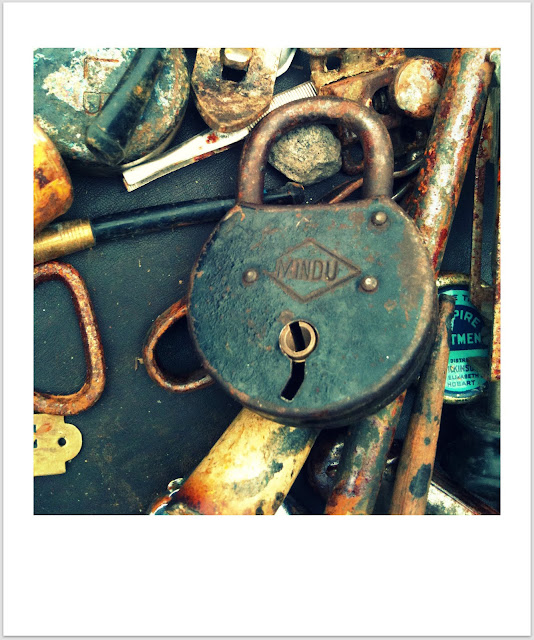I grew up on the remote West Coast of Tasmania in a small mining town called Luina. The town was so small that when the mine closed at the end of the 1980's the entire town vanished off the map. Men with chainsaws and behemoth trucks came and cut all the houses in two and one by one they disappeared until there was nothing left but shadows on the ground where the houses used to be and streets with driveways leading to nowhere.
Mining towns are full of ghosts. Towns built upon towns, they are at the mercy of outside forces, free markets and the generosity of mother earth. It is not uncommon for a mining town to have had two, three or sometimes four reincarnations depending on the demand for the bounty they exist upon. Where gold was once mined, thirty years later a ghost town could have new life breathed into it by the demand for nickle and silver and, 60 years after that, iron ore. Each boom and bust period leaves its residue on the land.
Luina was one of these historical layer cakes. 120 years of mining history written in the soil. Broken crockery, old leather boots, rusty tools, bottles of every shape and size, sometimes still with the contents intact. I found fob watches and bit's of dolls, medicine chests and rusty tins, and many many whisky bottles. Every clump of dirt we turned over seemed to offer up some new treasure. That cold, wet ghost town fostered my love of ephemera, and of hunting.
It's been a long time since I got to pick through the bones of a ghost town and in truth I never thought I would again, but just recently a very odd little stand has been appearing at my local Sunday market. Tables full of perfectly curated bits and bobs and odds and ends. Rusty thimbles, wombat skulls, badges and alarm clocks sit nestled amongst broken false teeth, coins and old clay pipes. Nothing has been sorted into groups and at first glance you might think the contents of a giant draw has been upended onto a table but if you look closely you can see that every object has placed with consideration. Thousands of little treasures, collected over thirty years, laid out on a table for you to discover.
For more lovely flea market finds pop over and see Sophie at Her Library Adventures!







first there are your telling pictures.
ReplyDeletethen there's this touching story.
this was a really good little read!
there is a lot of nostalgia there, both in pictures and words...
thank you for that.
Wow, wombat skulls?! Amazing. Lovely photos, thanks for sharing this!
ReplyDeleteI love your photos , they are beautiful!
ReplyDeleteHow intriguing - perhaps you can "unearth" the stall holders story and share it with us?
ReplyDeleteWhat a fabulous and historic story. Thank you for sharing :)
ReplyDeleteoh my god that looks like HEAVEN!
ReplyDeleteyou have a way with words! thanks for sharing!
ReplyDeleteWonderful! But my gosh! Someone unpacks and repacks all those things every week! Amazing! *s*
ReplyDeleteI would have loved a backyard full of treasure like you described! It is a shame about the town being destroyed like that, even if there wasn't a mine anymore.
ReplyDeleteI love the look of the stall. A treasure trove to pick through each weekend.
the stories are more interesting than the objects for many things themselves ...
ReplyDeleteMy Flea Market Find
Wonderfully atmospheric post Estelle and those dramatic photographs!
ReplyDeleteHI Estelle, me again! I'm tagging you as promised. If you go to http://birdwiththegoldenseed.blogspot.com/2010/07/tag-youre-it.html
ReplyDeleteyou will see the questions. You can answer as many or as few questions as you like. Have fun!
Oh I'd love to have a rummage through that lot, great photos!
ReplyDelete